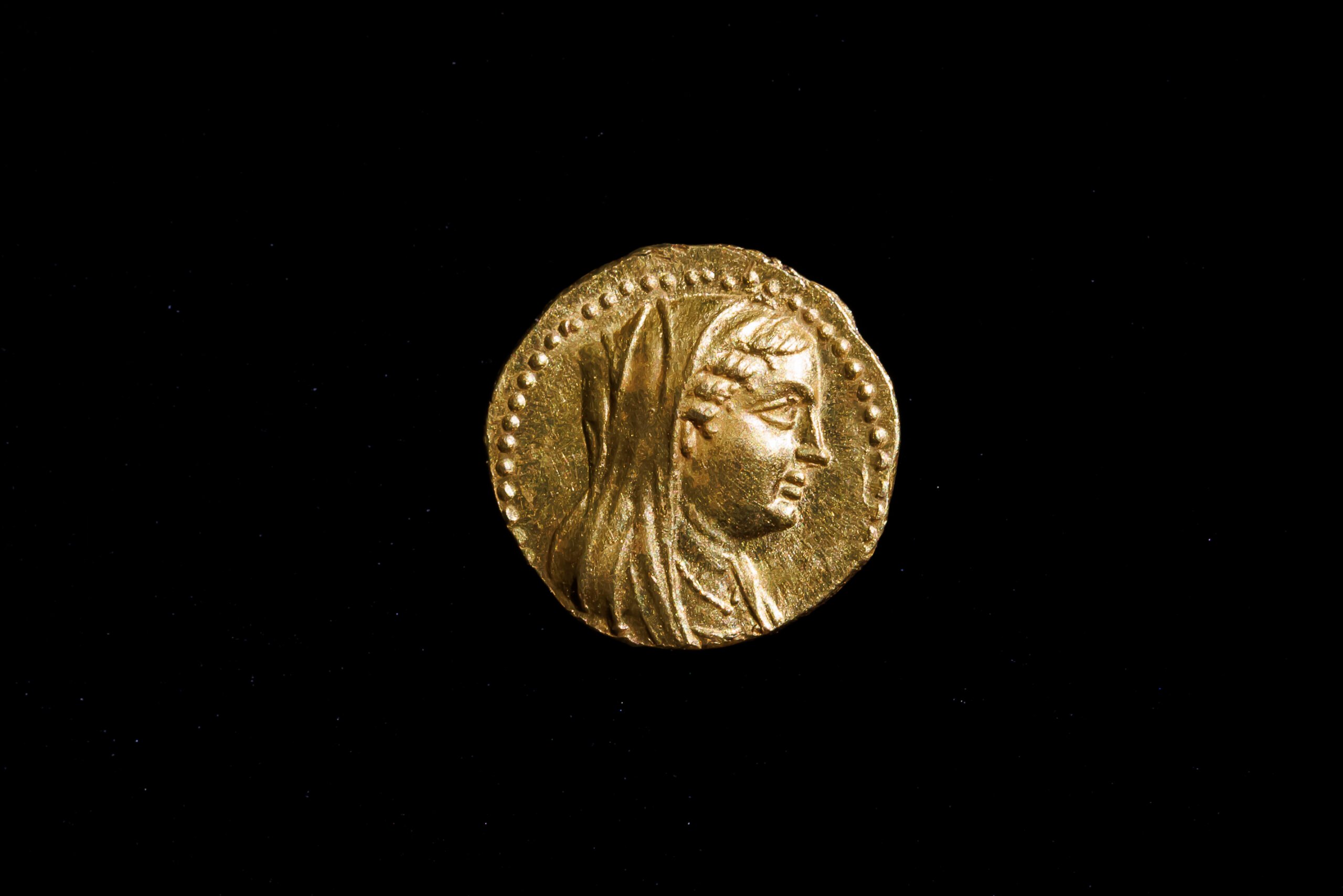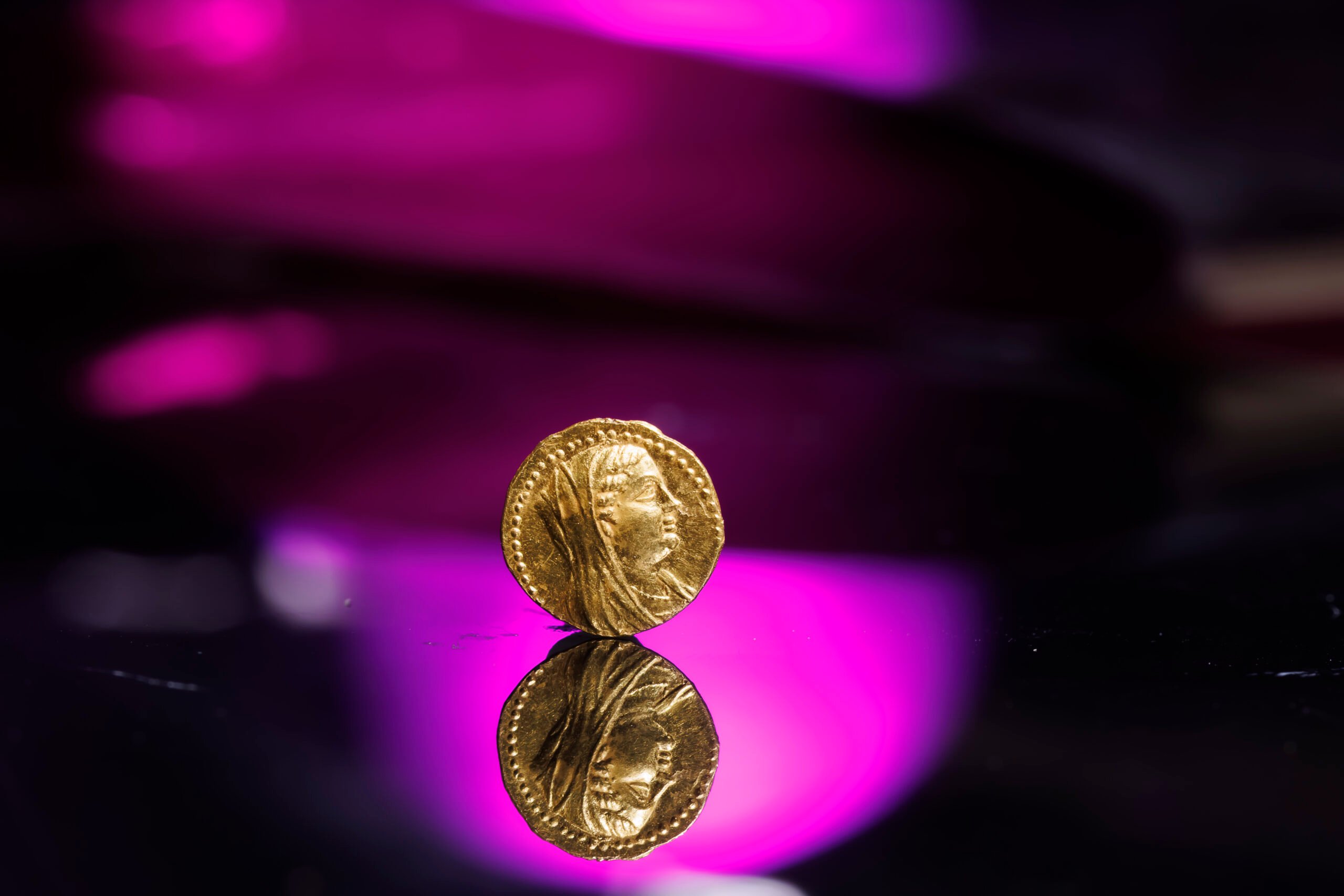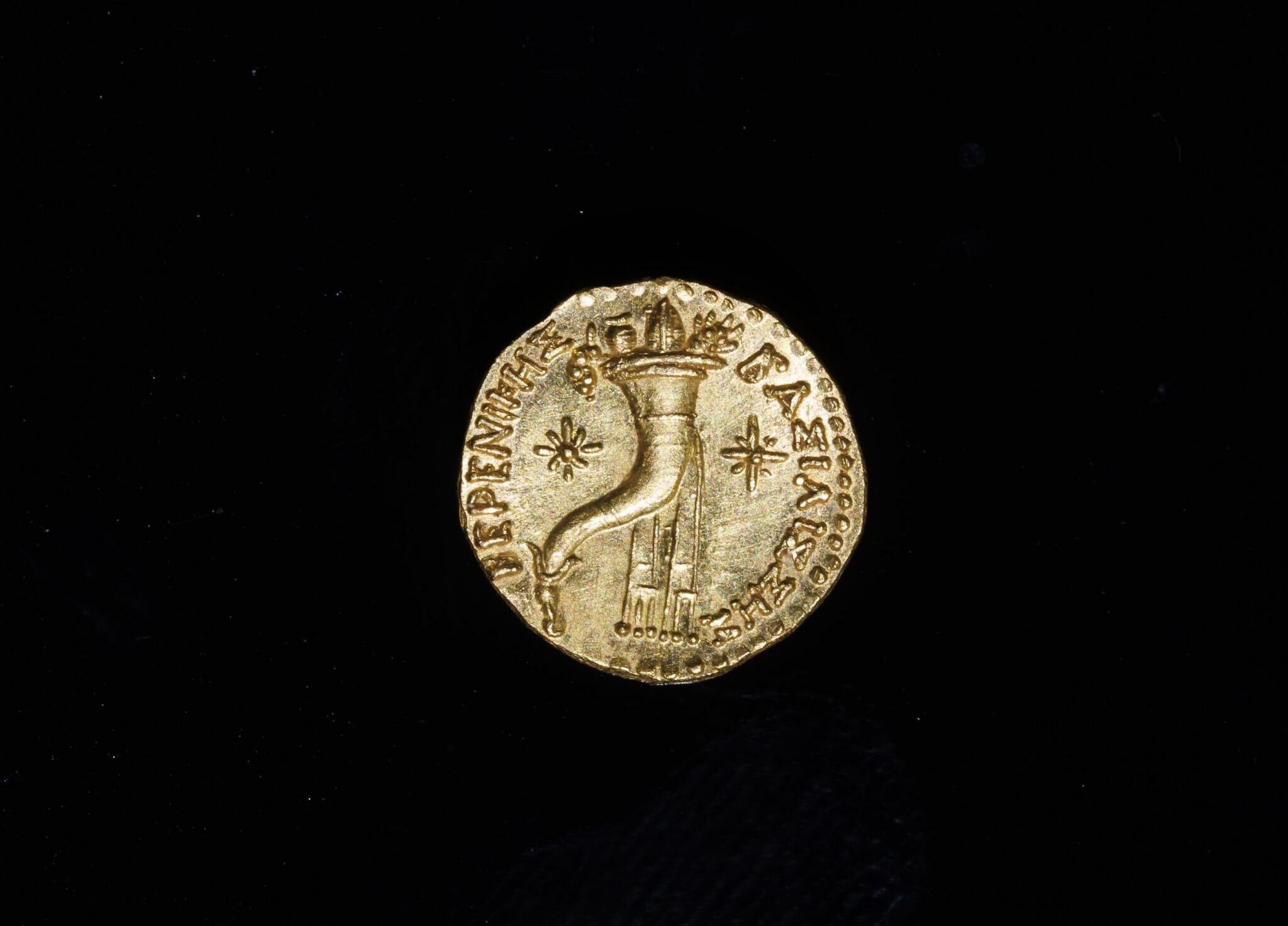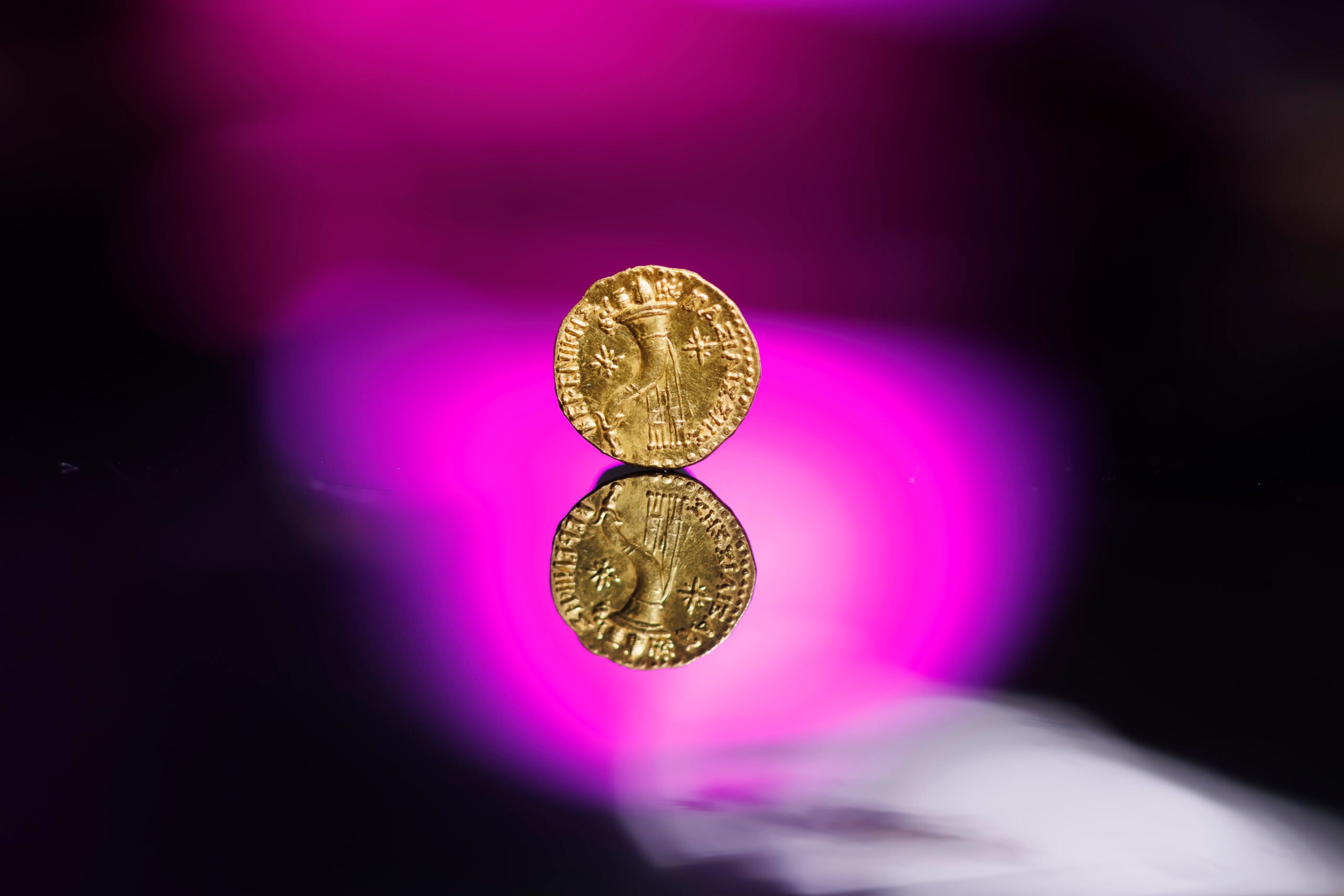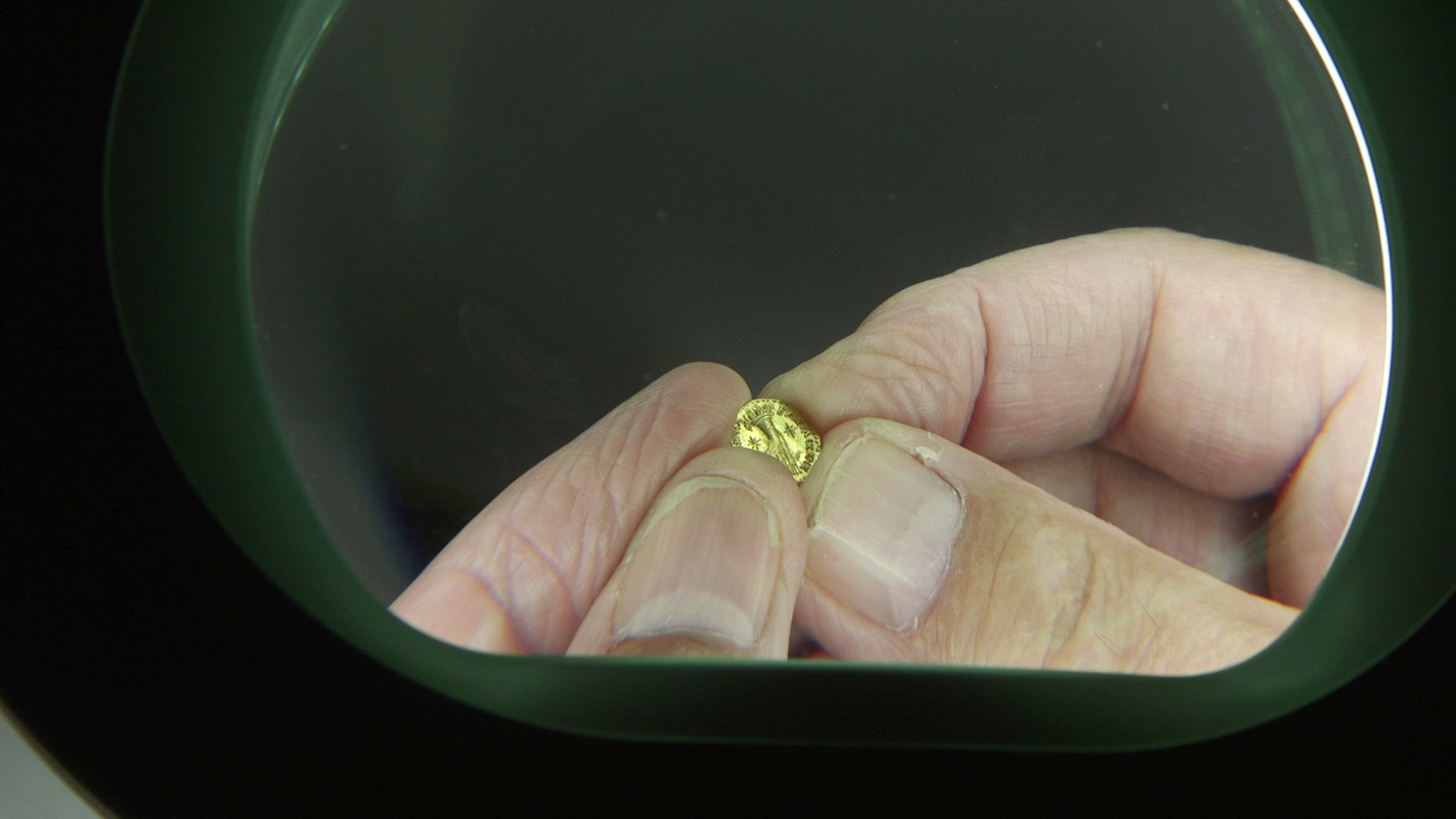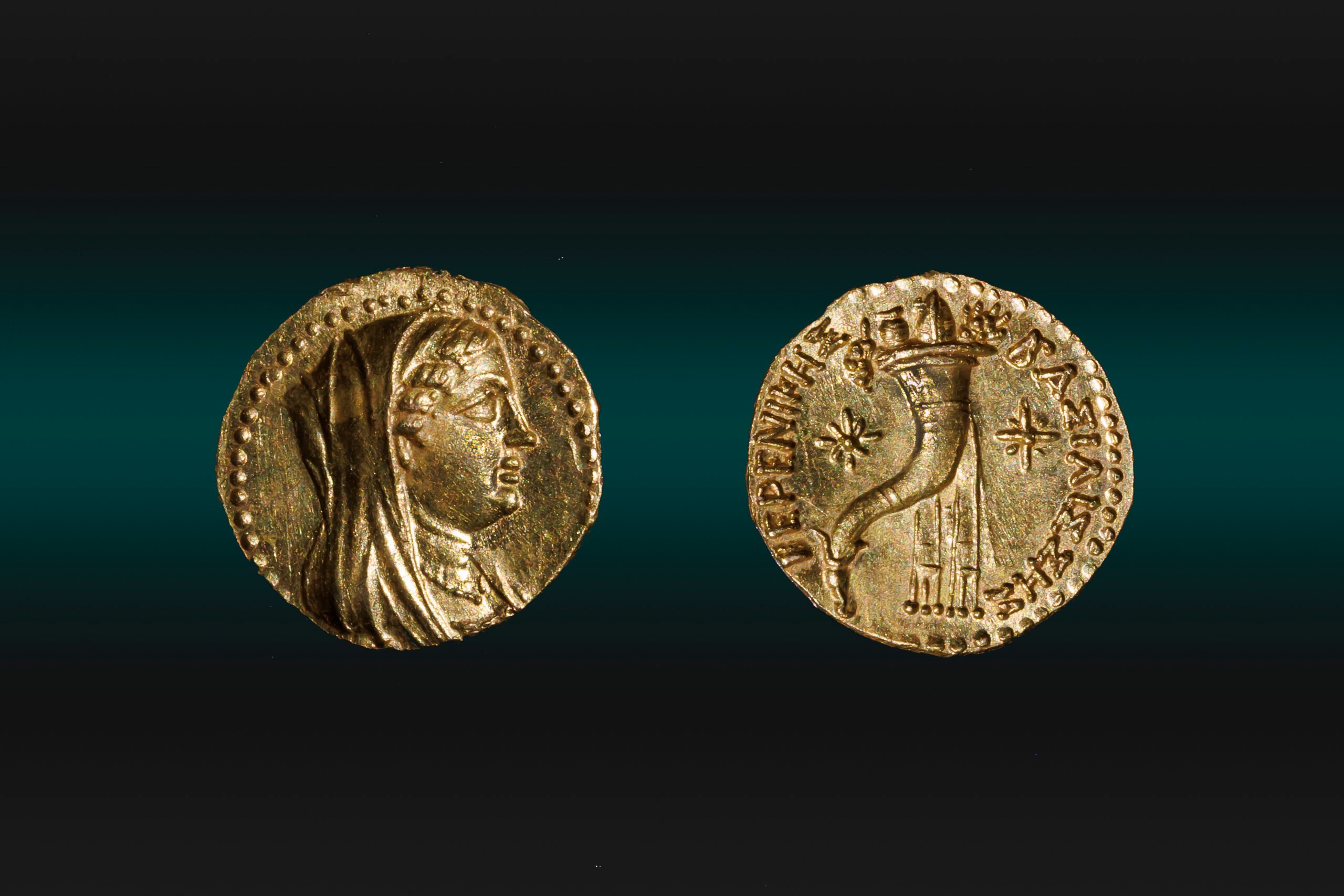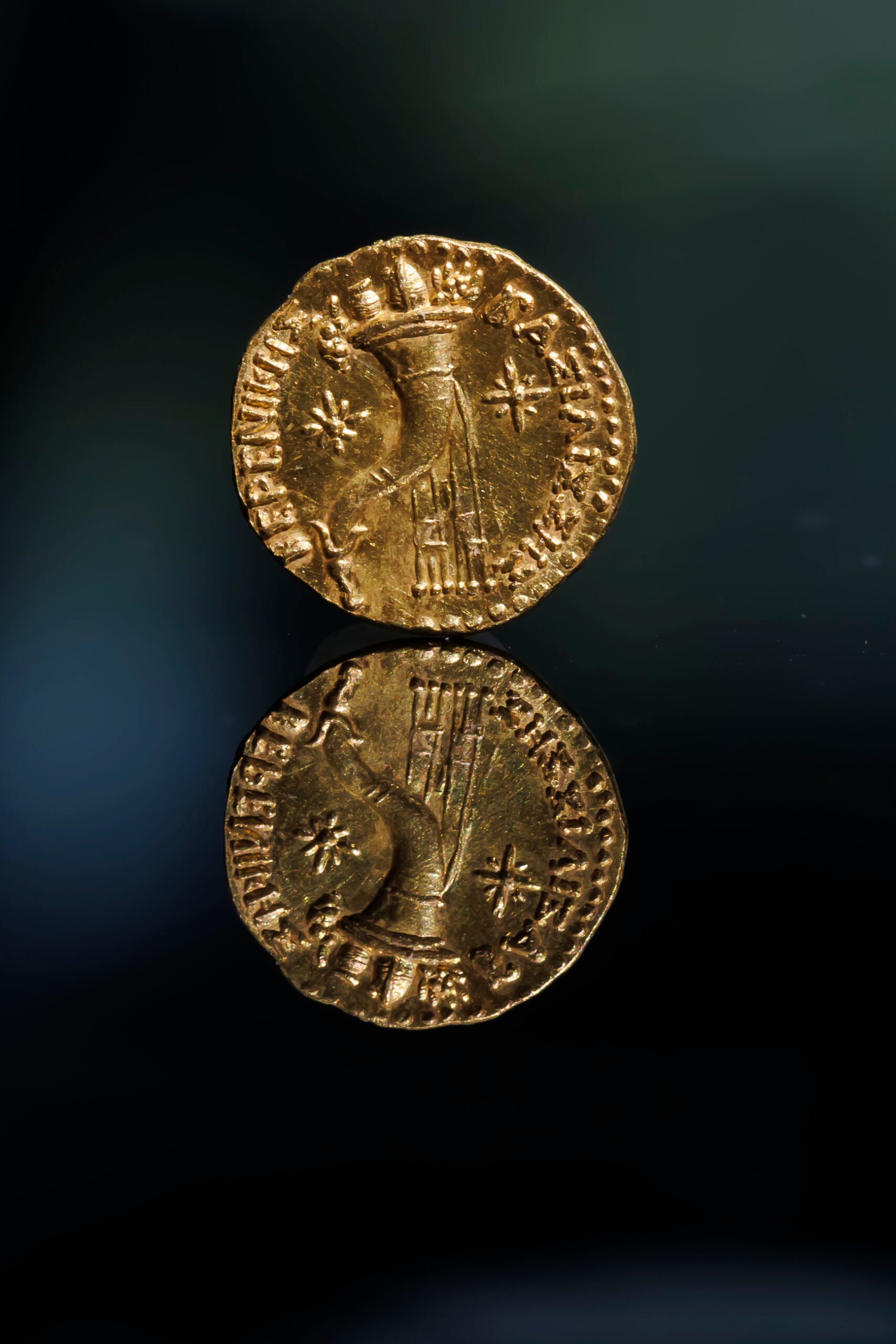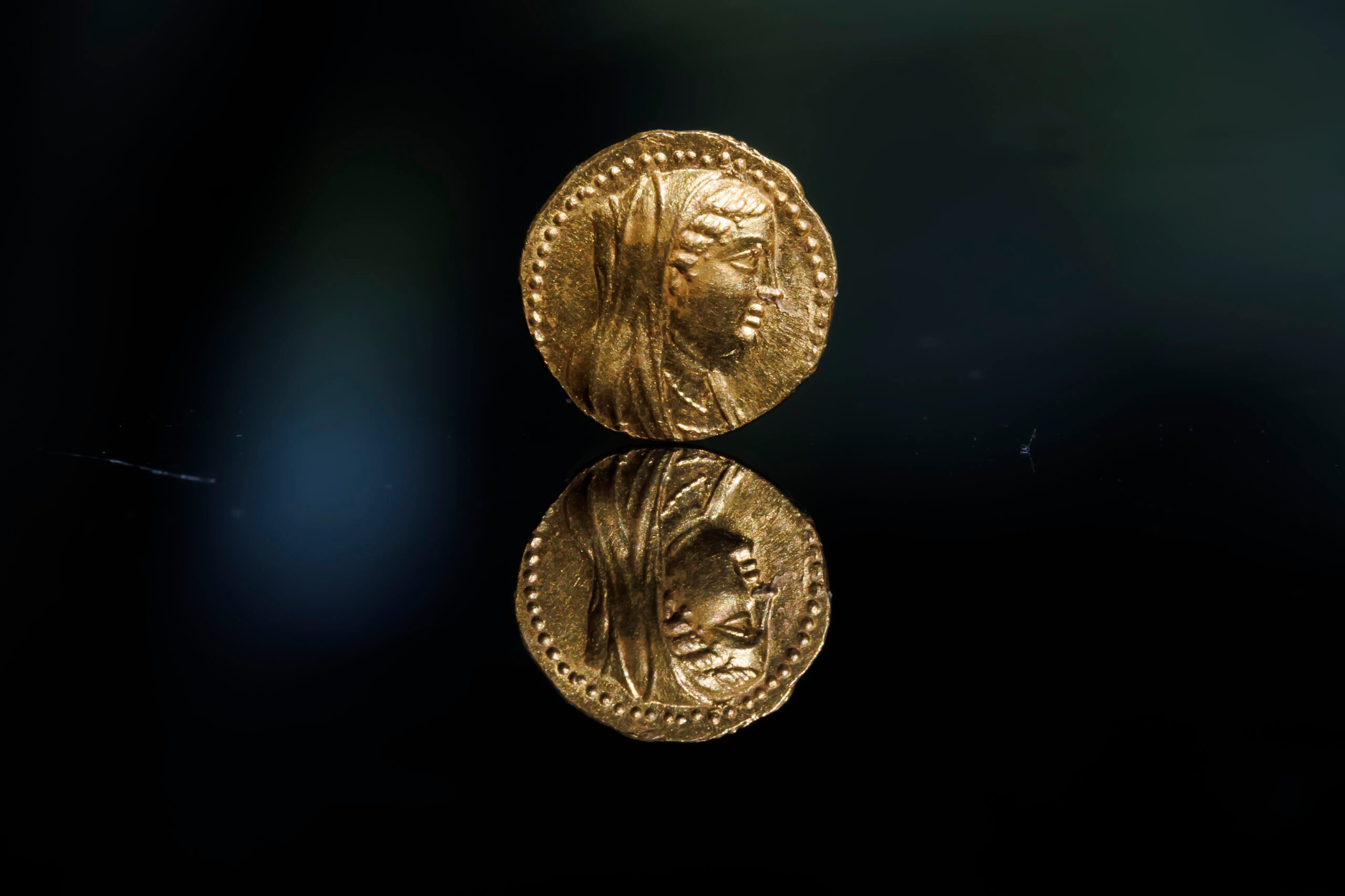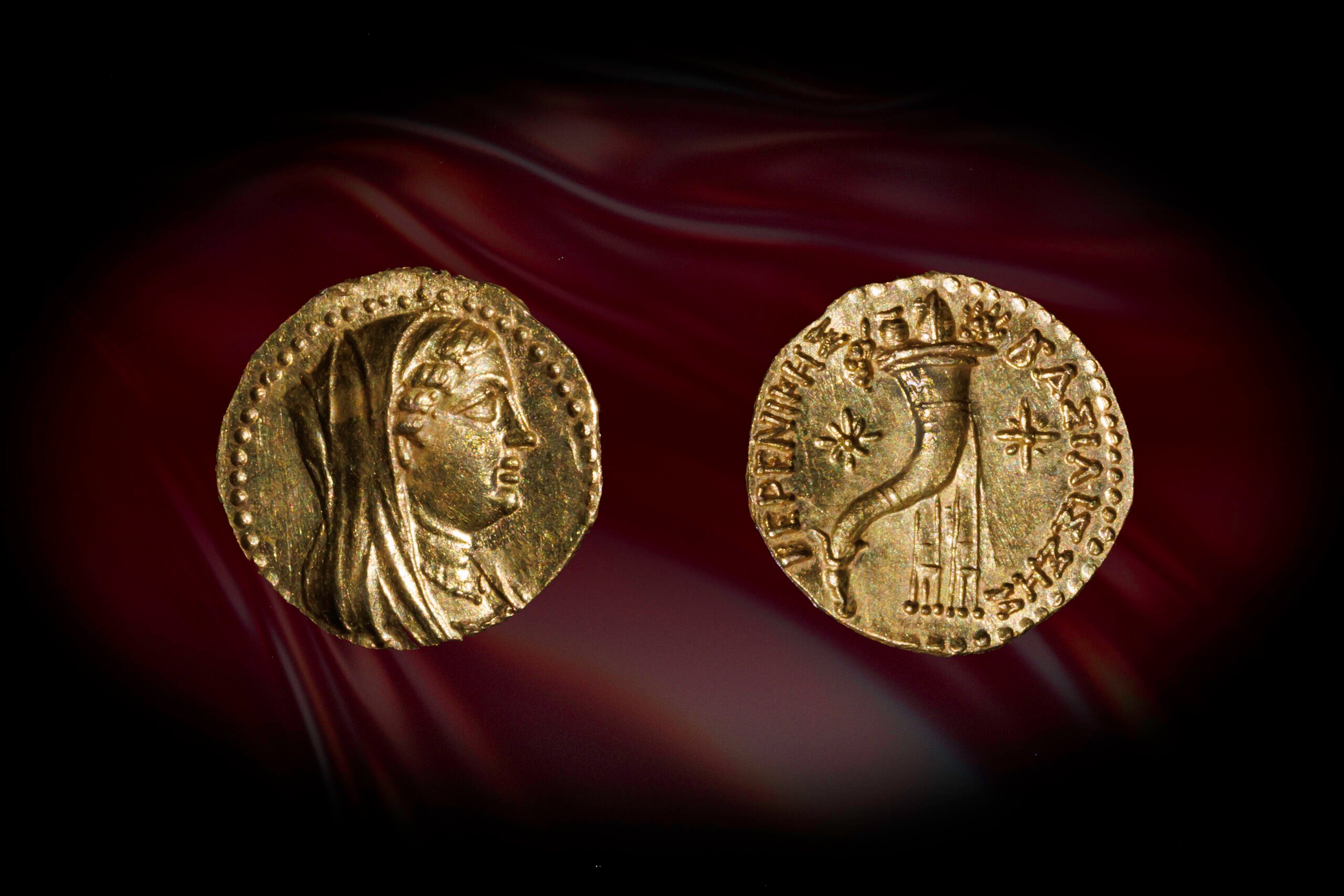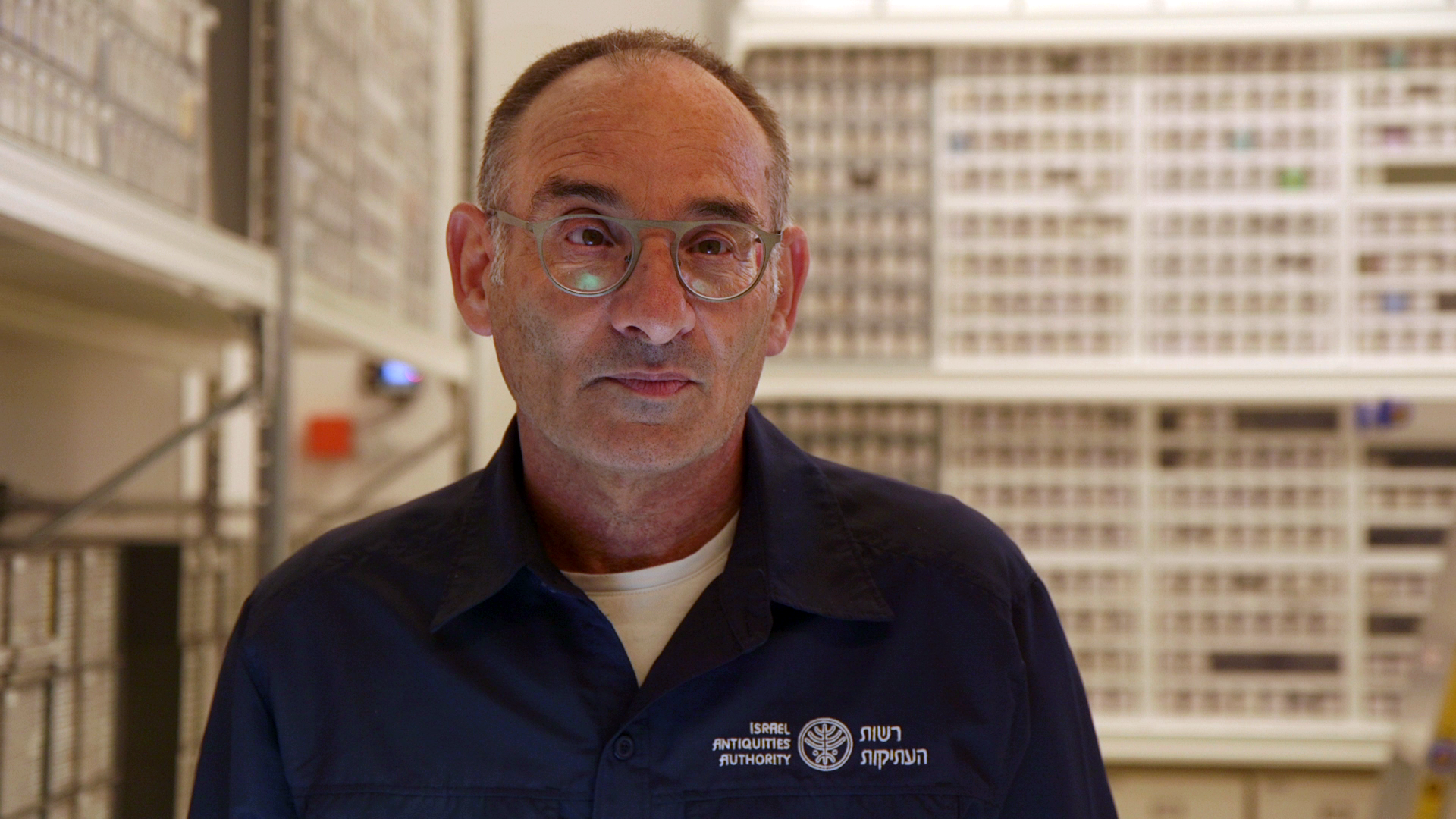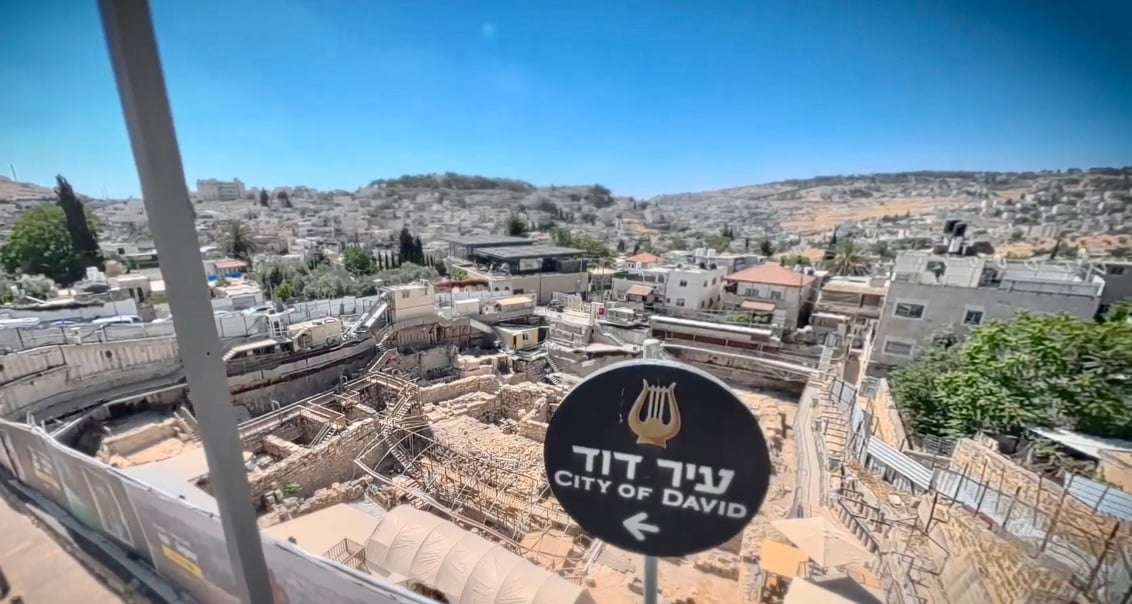This small, unique coin, made of pure gold, was possibly minted as part of a special series to pay donatives to soldiers. Only about 20 such coins are known to exist, and this is the first one discovered in a controlled excavation. Until now, research commonly assumed that Jerusalem after the destruction of the First Temple was a small, marginal, and economically weak town. The coin, together with additional findings from the excavation, sheds new light on the city during the Hellenistic period. The rare coin will be displayed to the public in an exhibition in early September as part of the annual City of David Research Conference.
A tiny but extremely rare gold coin, showing the portrait of the Hellenistic Queen Berenice II of Egypt (246–222 BCE), was discovered in the Givati Parking Lot excavations in the City of David National Park, conducted by the Israel Antiquities Authority.
The coin is a small denomination quarter-drachma, made of pure gold (99.3%), dated to 246–241 BCE, minted for Queen Berenice II, during the reign of her husband Ptolemy III, the Hellenistic ruler of Egypt. Only twenty of these rare coins are known to exist and this is the first coin ever found in a proper archaeological context. This rare coin will be displayed to the public in early September as part of the City of David Research Conference.
The obverse of the coin depicts Berenice as a Hellenistic queen, wearing a diadem and veil, with a necklace around her neck. The reverse shows a cornucopia, an ancient symbol of prosperity and fertility, flanked by two stars. A surrounding Greek inscription reads “ of Queen Berenice.”
The coin was discovered during soil sifting adjacent to the excavation area by Rivka Langler, an excavator at the Givati Parking Lot.
“As far as we know the coin is the only one of its kind ever discovered outside Egypt, which was the center of Ptolemaic rule,” said Dr. Robert Kool, Head of the Numismatics Department at the Israel Antiquities Authority, and Dr. Haim Gitler, Chief Curator of Archaeology and Curator of Numismatics at the Israel Museum, who studied the coin.
The Greek inscription “BASILISSES” – “of the Queen” – is rare on coins of this period. Queen Berenice appears here not as a consort of the king, but possibly as a ruler in her own right. Women appeared occasionally on Ptolemaic coins for nearly 300 years (305–30 BCE), the most famous of whom was Cleopatra. However, this is one of the earliest cases of a Ptolemaic queen appearing on a coin with such a title during her lifetime – possibly evidence of her exceptional status and political power.
The coin was likely minted in Alexandria, Egypt, perhaps to serve as a bonus for Egyptian soldiers returning from the Third Syrian War, a conflict between the two dominant Hellenistic powers at the time in the East, the Ptolemaic Kingdom of Egypt and the Seleucid Kingdom of Syria. Dr. Kool and Dr. Gitler emphasize: “Only about 20 such coins are known, and this is the first ever uncovered in a controlled archaeological excavation, making it a find of extraordinary scientific importance.”
The Minister of Heritage, Amihai Eliyahu, added:
“Jerusalem never ceases to surprise. The rare coin from the City of David may be a small find, but it carries great significance for understanding Jerusalem. Excavations in the City of David uncover entire chapters of the city’s history – from the glorious days of the Kingdom of Judah to the time after the destruction of the First Temple and the exile. After 2,000 years we have returned to our capital, and now we are privileged to uncover its rich past.”
The discovery of the coin, along with other gold jewelry found in the Givati Parking Lot excavation, will be presented to the public as part of the 26th Annual City of David Research Conference, taking place in early September.
